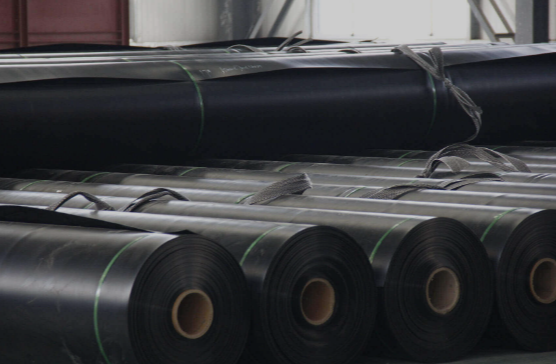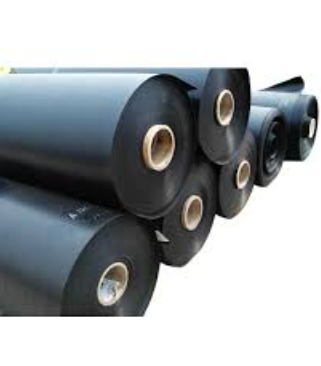- Understanding the Role of Geomembrane Liners in Waste Management
- Innovations in Geomembrane Liners for Water Management
- Geomembrane Liners: A Comprehensive Guide
- The Future of Geomembrane Liners in Civil Engineering
- Geomembrane Liners: Enhancing Landfill Stability
Manager:Alvin Wang
WhatsApp:+62 8983806051
Tel:+86 10-5797-1075
Email:steelwang@okorder.com
Address:3rd Floor, No.2 Building, No.1 Sanlihe Road
Does HDPE geomembrane become brittle?
This material is widely used in civil engineering and environmental applications because of its versatility, durability, as well as resistance to various environment-related stresses. hdpe Geomembrane has a significant role in protecting infrastructure and the environment from landfill liners to water containment systems. Nonetheless, many often challenge its long-term effectiveness and vulnerability to decay. This is one example among a host of other questions frequently asked: Does HDPE geomembrane become brittle? In this article, we will explore this question by looking at how and what contributes to brittleness in HDPE Geomembrane.

1 Understanding HDPE Geomembrane
As one looks into the problem at hand, there is need to appreciate the qualities and composition of HDPE geomembrane materials. High-Density Polyethylene (HDPE) geomembranes are thermoplastic liners that have been made out of high-density polyethylene resins. Because it shows extraordinary resistance against chemical corrosion, punctures, UV radiation as well as mechanical stress, this artificial membrane is perfect for containment applications.
2 Mechanisms of Brittleness
Several intrinsic or extrinsic factors within or outside the material can cause brittleness in an HDPE geomembranes. Although inherently durable and flexible, prolonged exposure to environmental stressors may initiate degradation processes that impair its mechanical properties.
3 UV-Degradation
UV degradation is one of the main causes of brittleness in HDPE Geomemrane. Sunlight’s ultraviolet (UV) radiation can photooxidatively degrade the surface layer on a geomerbrane generating free radicals that lead to chain scissioning on the polymer structure. Consequently , surface embrittlements can occur leading to cracks and loss of mechanical strength over time.
4 Fluctuations in Temperature
Additionally, temperature changes contribute significantly towards making HDPE geomemlrane brittle. Sudden change sin temperature lead to thermal strains in geomembrane materials, particularly in areas of extremes. At the same time , these thermal strains will cause polymer chains to degrade rapidly and lose their supple nature as they are prone to cracking or even fracturing.
5 Chemical Exposure
While HDPE geomembrane is renowned for its chemical resistance, exposure to certain aggressive chemicals can hasten its deterioration and contribute to brittleness. Chemical substances such as acids, solvents and hydrocarbons can infiltrate into the material of a geomembrane altering its structure through swelling, softening or embrittlement. Moreover, geo-oxidation reactions could occur leading further impairing the integrity of geomemrane and as such it becomes more likely to suffer from mechanical failures.
6 Mitigation Strategies
However, there is hope that HDPE Geomembranes which could become brittle if not controlled early enough but this is depended on anticipation and applying mitigating strategies that reduces the eventuality of brittleness ensuring long-term use of Geomembranes.
7 UV-Stabilization
One common practice aimed at mitigating UV degradation effects involves addition of UV stabilizers during HDPE resin formulation that can act as sacrificial agents by absorbing and dissipating UV radiation before it penetrates Geomemrane’s surface. Besides, protective surface layers like Geotextiles or coatings provide an additional defense against ultraviolet light thereby extending life of geomenbrane products.
8 Temperature Control
This implies that controlling fluctuations in temperature within a geomembrane system will be necessary so as to address thermal induced brittleness. Proper insulation , shading ,and reflective materials may reduce heat absorption thereby minimizing thermal stresses . Finally introducing passive ventilation or active cooling systems would ensure optimal temperatures are maintained over geomembranes’ lives thus preventing premature failure.
9 Chemical Resistance
Chemical resistance enhanced HDPE geomembrane formulations can decrease the risk of brittleness due to chemical contact. By choosing liner materials tailored for harsh installation site chemicals, chances of embrittlement and chemical degradation may be significantly reduced.

10 Conclusion
To sum up, even though it is reasonable to worry about the possibility of HDPE geomembrane becoming brittle over time, it should not be regarded as an inevitable outcome. Therefore, through knowledge on procedures of wear out and use of right technologies for prevention, the lifespan and functionality of HDPE liners can be extended by engineers or environmentalists. With proactive steps such as UV stabilization, temperature regulation and chemical resistance, the danger associated with brittleness would be minimized thereby enabling containment systems made from geomembranes to continue being efficient and reliable for many years ahead.
-
2024-12-05Geomembrane Liners: A Comprehensive Guide






